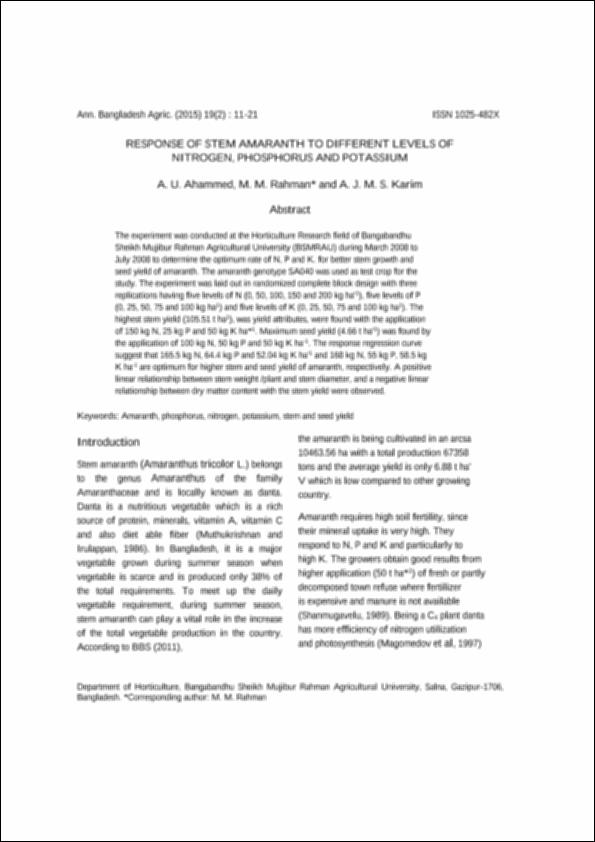| dc.description.abstract | Abstract :
The experiment was conducted at the Horticulture Research field of Bangabandhu
Sheikh Mujibur Rahman Agricultural University (BSMRAU) during March 2008 to
July 2008 to determine the optimum rate of N, P and K. for better stem growth and
seed yield of amaranth. The amaranth genotype SA040 was used as test crop for the
study. The experiment was laid out in randomized complete block design with three
replications having five levels of N (0, 50, 100, 150 and 200 kg ha'1), five levels of P
(0, 25, 50, 75 and 100 kg ha1) and five levels of K (0, 25, 50, 75 and 100 kg ha1). The
highest stem yield (105.51 t ha1), was yield attributes, were found with the application
of 150 kg N, 25 kg P and 50 kg K ha*1. Maximum seed yield (4.66 t ha'1) was found by
the application of 100 kg N, 50 kg P and 50 kg K ha-1. The response regression curve
suggest that 165.5 kg N, 64.4 kg P and 52.04 kg K ha'1 and 168 kg N, 55 kg P, 58.5 kg
K ha-1 are optimum for higher stem and seed yield of amaranth, respectively. A positive
linear relationship between stem weight /plant and stem diameter, and a negative linear
relationship between dry matter content with the stem yield were observed. | en_US |

